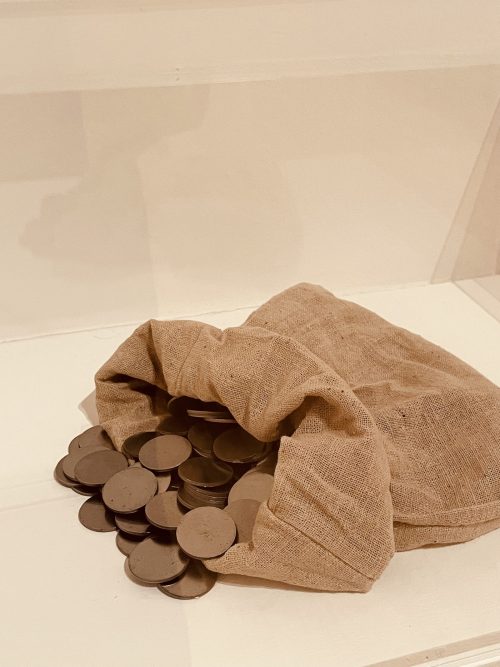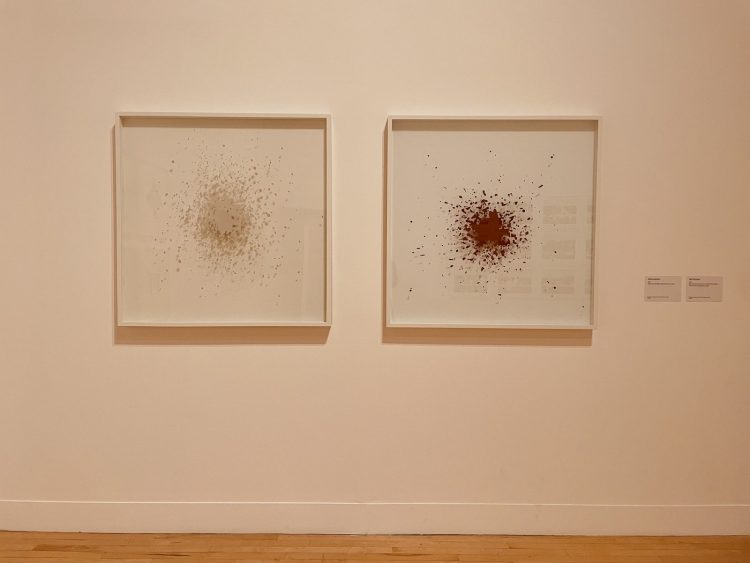There is an underlying tone of apocalypse with current events, including human rights, global warming and the effects of consumerism
Cornelia Parker, a British artist best known for her large-scale art installations is currently exhibiting at the Tate Britain. Parker’s art installations are often a collection of everyday objects familiar to all which the artist then drastically modifies - by exploding it, shooting it, burning it, squashing it, inverting it, to name a few. Coupled with the artist’s powerful narratives for each piece of her work, she transforms everyday objects into extraordinary works of art that tells a compelling story. One of Parker’s first solo exhibitions since the pandemic, a wide selection of almost 100 works developed over the past 35 years are displayed in this exhibition at the Tate Britain. Usual to Parker’s art installations, there is an underlying tone of apocalypse with current events, including human rights, global warming and the effects of consumerism. This exhibition’s gallery texts are thoughtfully accompanied by Parker’s own commentaries, which provides an invaluable insight to each of the artwork displayed and also tells a memorable story.
With Thirty Pieces of Silver, Parker collected silver items from car-boot sales, market and auctions, then squashed them using a steamroller, followed by the assembly into thirty separate pools of silver. Each pool is elevated off the floor level, which heightens the fact that they are two dimensional objects yet they cast a show that is almost three dimensional as you walk around them. The process and effect of Thirty Pieces of Silver was described as ‘resurrecting the objects and replacing their lost volume.’ Parker explained her inspiration for Thirty Pieces of Silver was actually from her childhood love of cartoons; there is a sense of going against the seriousness of what one might think of when they say art sculptures. Parker shared that the piece’s title was borrowed from the Bible where thirty pieces of silver was the amount of money Judas received for betraying Jesus.

Embryo Money (1996) by Cornelia Parker. Ten pence pieces in the earliest stage of production. Image by Von Chua.
Money seems such a powerful material, but in the end it’s only metal. I was keen to see how it was made and managed to get behind the scenes at the Royal Mint, in Pontyclun, Wales. I asked if I could have some coins without a face. Removing these metal discs from the process just before they were struck made them a currency interrupted before it had value, before it accrued power.
ー Cornelia Parker
Without any narrative, Embryo Money looks just like a bag of plain metal discs. However, Embryo Money is a piece that poses a provocative question as to what money represents; the above narrative quoted from Parker shows just how much power processing these metal discs have. As Parker’s commentary says, “money seems such a powerful material, but in the end it’s only metal.” With today’s digitisation, the use of physical currency like coins and currency notes are almost obsolete in countries where financial technology is widely adopted. Like these coins without a face, which bears no value and hence, no power accrued. How do we differentiate or put a clear value to digital currency in the future of money?
A thorny run-in with US Customs officials gave me a perverse desire to work with Customs and Excise in the UK. I got to know the team at their Cardiff headquarters over a period of several months. They agreed to give me some confiscated cocaine. They gave me a big black bin-liner full, a million pounds’ worth burnt to a cinder. I love the theatrical way they destroy illicitly smuggled contraband, steamrollering fake Rolex watches or alcohol. Like me, they are often symbolically killing things off.
ー Cornelia Parker
Another provocative artwork that pushes visitors to question the value of things, Exhaled Cocaine is a piece that may have contained high value illegal items as well as fake items made to dupe buyers. At the end of the day, post-incineration, high value items or items pretending to be of high value becomes useless dust and returns to the ground worthless. What does this say about the initial value or perceived value of what they used to be? Again, Parker’s powerful narrative puts this question front and center.
From afar, White Abstract and Red Abstract by Parker look quite unassuming. Upon closer inspection, these pieces are layered, revealing subtle colour differences and piques one’s curiosity. In short, White Abstract is made from chalk from the White Cliffs of Dover, whereas Red Abstract is made from brick dust from the house that fell off the White Cliffs of Dover. Understanding the materiality after reading the narrative of the art, one will likely gain a new perspective and perhaps even appreciation of the two complementary pieces.
Amongst the works currently exhibited in the Tate Britain is the large-scale installation titled Cold Dark Matter: An Exploded View (1991). One of her most recognisable works, it was a garden shed blown up into fragments, then each piece and the contents inside the shed are suspended. Seeing the artwork is like experiencing the explosion process; each fragment is frozen in one particular time. With Parker’s intentional use of a light source in the centre of the piece, each exploded fragment casts dramatic shadows on the walls of the room. The sheer scale of the ‘explosion’ and the shadows leaves one to slow down in steps, and is a room I would highly recommend visiting if you have a few hours to visit an art gallery in London this summer.
Cornelia Parker was nominated for the Turner Prize in 1997. She was recently appointed as a Commander of the Order of the British Empire (CBE) for services to the Arts in the Queen’s Jubilee Birthday Honours List 2022, and was previously appointed as an Officer of the Order of the British Empire (OBE) in 2010. This solo exhibition at the Tate Britain will be displayed until October 2022.
If you have any questions, please do not hesitate to contact me via email at von@vonxarchitects.com

 English
English 日本語
日本語




